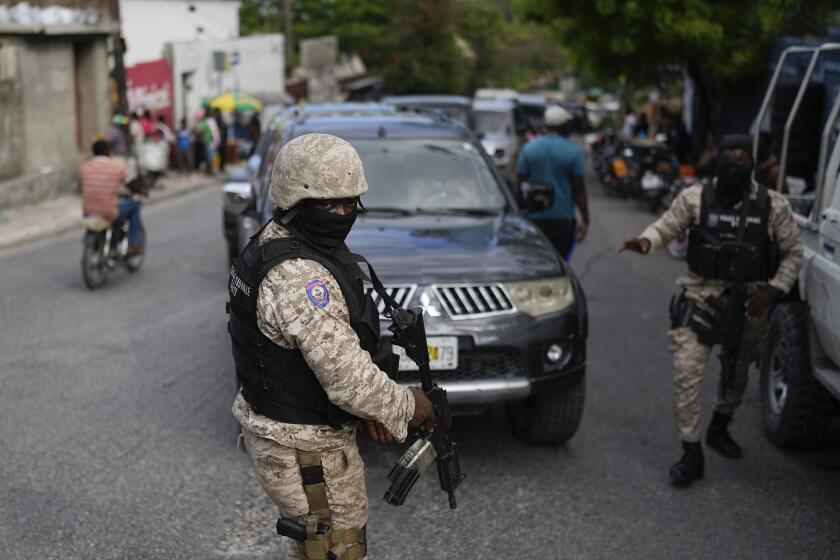Barbarians with wings
Barbarism seems an obvious enough category. Barbarians kidnap people in Iraq and cut off their heads. Isn’t that the very definition of barbaric?
Or they strap on grenades or plastic explosives, with nails added in to create instant shrapnel that will rend human flesh. Then they approach a target -- in Jerusalem, or near a mosque in Iraq or Pakistan, or perhaps on the streets of Kabul, or on a train in London or Mumbai -- and they blow themselves up. Or perhaps they audaciously hijack jets and fly them into skyscrapers. What could be more barbaric than that?
That’s them. But what about us? We, like most people, don’t consider ourselves barbarians. Nevertheless, we have only managed to remain so sanguine by removing the most essential aspect of the American way of war from the category of the barbaric. I’m talking about air power and about the belief -- so long-lasting, so deep-seated -- that bombing others, including civilian populations, is a “strategic” (rather than a barbaric) thing to do; that air power can, in relatively swift measure, break the “will” of the enemy and thereby end war faster.
It can’t, of course, but repeated failures have never shaken the hold that the idea has on the war-making imagination, and the result has been horrific.
When it comes to brutality, ancient times have gotten a bad rap. It may be that the human capacity for brutality, for barbarism, hasn’t changed much since the 8th century, but the Industrial Revolution -- and in particular the rise of the airplane -- opened up new landscapes to brutality. The view from behind the gun sight, then the bombsight and finally the missile sight slowly widened until all of humanity was taken in, until the military and civilians on the ground became so many indistinguishable ants.
As far as anyone knows, the first bomb was dropped by hand over Libya, which was at the center of a territorial dispute between Italy and Turkey. According to Sven Lindqvist’s “A History of Bombing,” one Lt. Giulio Cavotti “leaned out of his delicate monoplane and dropped the bomb -- a Danish Haasen hand grenade -- on the North African oasis Tagiura, near Tripoli.”
That was 1911, and the damage was minimal. Only 34 years later, vast armadas of B-17s and B-29s were taking off, up to 1,000 planes at a time, to bomb Germany and Japan. In the case of Tokyo -- then constructed almost totally out of flammable materials -- a single raid carrying incendiary bombs and napalm that began just after midnight on March 10, 1945, killed at least 90,000 people, possibly many more, from such a height that the dead could not be seen (though the stench of burning flesh carried to the planes).
What descended from the skies, as James Carroll puts it in his book, “House of War,” was “1,665 tons of pure fire ... the most efficient and deliberate act of arson in history.” It was the bonfire of bonfires, and not a single American plane was shot down.
On Aug. 6, 1945, all the power of that vast air armada was reduced to a single plane, the Enola Gay, and a single bomb, “Little Boy,” dropped near a single bridge, doing to Hiroshima what it had taken 300 B-29s and many hours to do to Tokyo. In those two cities -- as well as Dresden and other enemy cities -- the dead (estimated at 900,000 in Japan and 600,000 in Germany) were preponderantly civilian, and far too distant to be seen by plane crews.
When military air power was in its infancy and silent films still ruled the movie theaters, the first air-war films presented pilots as knights of the heavens, engaging in chivalric one-on-one combat in the skies. After all, in the wake of the meat grinder of trench warfare in World War I -- in which young men had died by the hundreds of thousands from machine guns, poison gas, all the lovely inventions of industrial civilization -- air power seemed a welcome relief.
The image of knights jousting in the skies slowly disappeared from the culture. It could perhaps last be found in the film “Top Gun” (and in the old Peanuts comics in which Snoopy forever fights the Red Baron).
In the real world, that courtly image was shattered much more quickly. When civilians were first purposely targeted and bombed, the act was widely condemned as inhuman by a startled world.
People were horrified when, during the Spanish Civil War in 1937, Hitler’s Condor Legion and planes from fascist Italy bombed the Basque town of Guernica, engulfing most of its buildings in a firestorm that killed hundreds, if not thousands, of civilians. Later that year, as the Japanese began their campaign to conquer China, they bombed a number of cities. A single shot of a Chinese baby wailing amid the ruins, published in Life magazine, was enough to horrify Americans.
World War II began with the German bombing of Warsaw. On Sept. 9, 1939, according to Carroll, President Franklin D. Roosevelt “beseeched the war leaders on both sides to ‘under no circumstances undertake the bombardment from the air of civilian populations of unfortified cities.’ ” Then came the terror-bombing of Rotterdam and Hitler’s Blitz against Britain in which tens of thousands of civilians died, each event another unimaginable act by the planet’s reigning barbarians.
British civilians, of course, still retain a deserved reputation for the stiff-upper-lip-style bravery with which they comported themselves in the face of the merciless German air offensive. No wills were broken there, nor would they be in Russia, where, in 1942, about 40,000 were killed in German air attacks on Stalingrad alone.
All of this, of course, came before it was clear that the United States could design and churn out planes in greater numbers and with more firepower than any country on the planet. It was before the U.S. and Britain decided to fight fire with fire by blitz- and terror-bombing Germany and Japan. (The U.S. moved more slowly and awkwardly than the British from failed “precision bombing” campaigns against targets such as military factories or oil-storage depots to “area bombing” that was simply meant to annihilate civilians and destroy cities. But move American strategists did.)
It came before Dresden and Hiroshima; before Pyongyang, along with much of the Korean peninsula, was reduced to rubble from the air in the Korean War; before the Plaine des Jarres in Laos was bombed back to the Stone Age in the late 1960s, before B-52s were sent against Hanoi and Haiphong in Christmas 1972 to wring concessions out of the North Vietnamese at the peace table in Paris; before President George H.W. Bush ended the Persian Gulf War with what U.S. forces boasted was a “turkey shoot” on what came to be known as the “highway of death” as Saddam Hussein’s military fled Kuwait City; before we bombed Afghanistan in 2001; and before we shock-and-awed Baghdad in 2003.
No wills were broken, but a new language to describe air war did develop. “Smart bombs” and “precision-guided weapons” came online. Air attacks were termed “surgical,” and civilian casualties were dismissed as “collateral damage.” All of this helped remove the sting of barbarity from air power (unless, of course, you happened to be one of those “collateral” people under a “surgical” strike).
This effort to dehumanize the victims was made easier by the fact that the dangers facing the bomber pilots themselves were generally minimal.
War from the air was becoming a one-way street of destruction. At an extreme, with the arrival of fleets of Hellfire-missile-armed unmanned Predator drones over Iraq, the knight of the air suddenly found himself 7,000 miles away at Nellis Air Force Base near Las Vegas, delivering “precision” strikes by video screen.
This kind of war has the allure, from a military point of view, of ever fewer casualties on one end in return for ever more on the other, as well as a sense that the world can truly be “remade” from on high, by remote control and at a great remove -- a powerful, even a transporting fantasy for strategists.
Now, with the fervent backing of the Bush administration, another country is being “remade” from the air -- Lebanon. With the help of American precision-guided and bunker-busting bombs, the Israelis have been launching airstrike after airstrike. They have hit an international airport, Lebanon’s largest milk factories, aid convoys, Red Cross ambulances, a U.N. observer post, bridges, a lighthouse, even families fleeing at the urging of the attackers.
And yet, of course, the “will” of the enemy is not broken. The Israelis are rediscovering -- though by now, you’d think that military planners with half a brain wouldn’t have to destroy a country to do so -- that it is impossible to “surgically” separate a movement and its supporters from the air. When you try, you invariably do the opposite, fusing them ever more closely.
Someday, someone will take up the grim study of the cleansing language of air power. Every air war has its own vocabulary meant to take the sting out of its essential barbarism. In the case of the Israeli war in Lebanon, the term -- old in the military world but never before so widely adopted -- is “degrading,” not as at Abu Ghraib, but as in “to impair in physical structure or function.” It sounds like erosion, almost a natural process, and is being used to cover a range of sins.
Try Googling it. It turns out to be almost everywhere, used much as it was in this CBS News report: “Around the world, the U.S. opposition to a cease-fire is viewed as the U.S. giving Israel a ‘green-light’ to degrade the military capability of Hezbollah.”
Does the air war in Lebanon seem to be heavily targeted against civilians? That’s not surprising; war from the air has always been essentially directed against civilians.
As in World War II, air power -- no matter its stated targets -- almost invariably turns out to be worst for noncombatants and, in the end, to be aimed at society itself. In that sense, its damage is anything but “collateral,” never truly “surgical” and never in its overall effect “precise.”
More to Read
Start your day right
Sign up for Essential California for news, features and recommendations from the L.A. Times and beyond in your inbox six days a week.
You may occasionally receive promotional content from the Los Angeles Times.






